Winter is like of my neighbor’s receding hairline. Its decline is subtle and gradual. Inconspicuous from day to day. Yet, while seasons regenerate and are renewed by annual equinoxes, his crowning glory showed no signs of recovery.
Sitting at the Café De L’hotel, a brasserie reminiscent of a 60’s film set in the little-languid town of Uzès one Saturday morning, conversations billowed against the hissing of the espresso machine. Listening in to the chatter, never before had I been entertained by the locals in their dialogues on things that mattered to the French – government, wine, union strikes, “that” choice between getting a new wife or a dog, and bien sur, the weather.
 If there has been an occasion when they all agreed unanimously, it’s the latter. How their throats swelled in protest complaining about the lingering cold despite the recent news that a number of seaside enclaves in the South of France had already began welcoming the arrival of summer. Yet, in this well preserved commune in the Gard department, just a mere three-hour drive from the coastal city of Nice and 16 miles northeast of Nimes, winter endures on. Though there are occasional moments of reprieve like days when one could leave the house with just a sweater; and when the sun would burst out from behind the thick ominous steel grey sky like a benediction.
If there has been an occasion when they all agreed unanimously, it’s the latter. How their throats swelled in protest complaining about the lingering cold despite the recent news that a number of seaside enclaves in the South of France had already began welcoming the arrival of summer. Yet, in this well preserved commune in the Gard department, just a mere three-hour drive from the coastal city of Nice and 16 miles northeast of Nimes, winter endures on. Though there are occasional moments of reprieve like days when one could leave the house with just a sweater; and when the sun would burst out from behind the thick ominous steel grey sky like a benediction.
It seems that summer had been in everyone’s mind. A thought of the much anticipated season provoke a certain enthusiasm. A kind of enveloping warmth that softens the hardened French smug guise – a facial malady brought by the erratic-clingy winter. With anguishing reports on climate change, everyone is uncertain when will summer finally come.
My drifting senses snappily recoiled as the barista placed the cup against the porcelain saucer making a clink. The waiter came and brought my coffee and then went on to the next table to serve the newly arrived couple after a fond exchange of bisous. Here I am in a corner, between the haze of cigarette smoke and hysteria, taking a peek into the life’s daily ritual of this town’s inhabitants at the same time sympathizing. Above me, frames hung on the wall forming a mosaic. There are private collections of paintings and photos of several artists whose eyes stare bravely into the future.
When friends back home in the Far East think about the South of France, they imagine a part of a country synonymous with sun and sea. On a mission to blur the lines, offer inspirited wisdom of avoiding hooting tipsy backpackers charging out into the night as well as finding a peaceful retreat that is quintessentially ‘a la sud’. I ventured inland and crossed the other side of the Rhône (the river that originates from the Swiss Alps and runs through Southeastern France) and set foot for the first time in the town of Uzès.




For Gide, Uzès offered respite from Paris. His sojourns to his father’s hometown were made of hunting insects, a search for inspiration for his next trip or novel, and admiration of the landscape which influenced his views as a writer. “The rough garrigue was adorned with clumps of purple and white cestuses and the air was filled with the scent of lavender” as he once put it in one of his numerous visits to Uzès.
It’s almost a decade and the Mediterranean vegetation remains unchanged and is exactly as Gide used to describe it. Flowers of different pastels proliferate the hilly-rocky earth. Flowerbeds adorned the streets and some dangle from the windows. From time to time, one’s nostril catches a whiff of lavender. After a quick crash course from the writer’s point of view, I continued to wander around the town’s narrow cobbled streets that date back to medieval times. Here are facades that stood magisterially – like silent emissaries from one history to another. First came the Romans establishing a settlement, then the Franks from the north, the Jews and Huguenots and along with them were clashes smeared by religious uprisings and political reforms during the French Revolution.
From the shady boulevard passing by a small stretch of art galleries and artisanal shops, I veered down one lane and came across one of the town’s dominant landmarks – The Duchy or the Duke’s Castle. The almost porous limestone structure glows in the soft light of the afternoon. With its imposing turret punctuating the town’s skyline, it was a befitting residence for a duke that visits his estate every summer. On the even quieter eastern side of the town, a bell tower known as the fenestrelle sits on a knoll juxtaposed to the solid complex church of St. Théodorit. Much like of a leaning tower of Pisa, lacy and meticulously built without the vertiginous height.
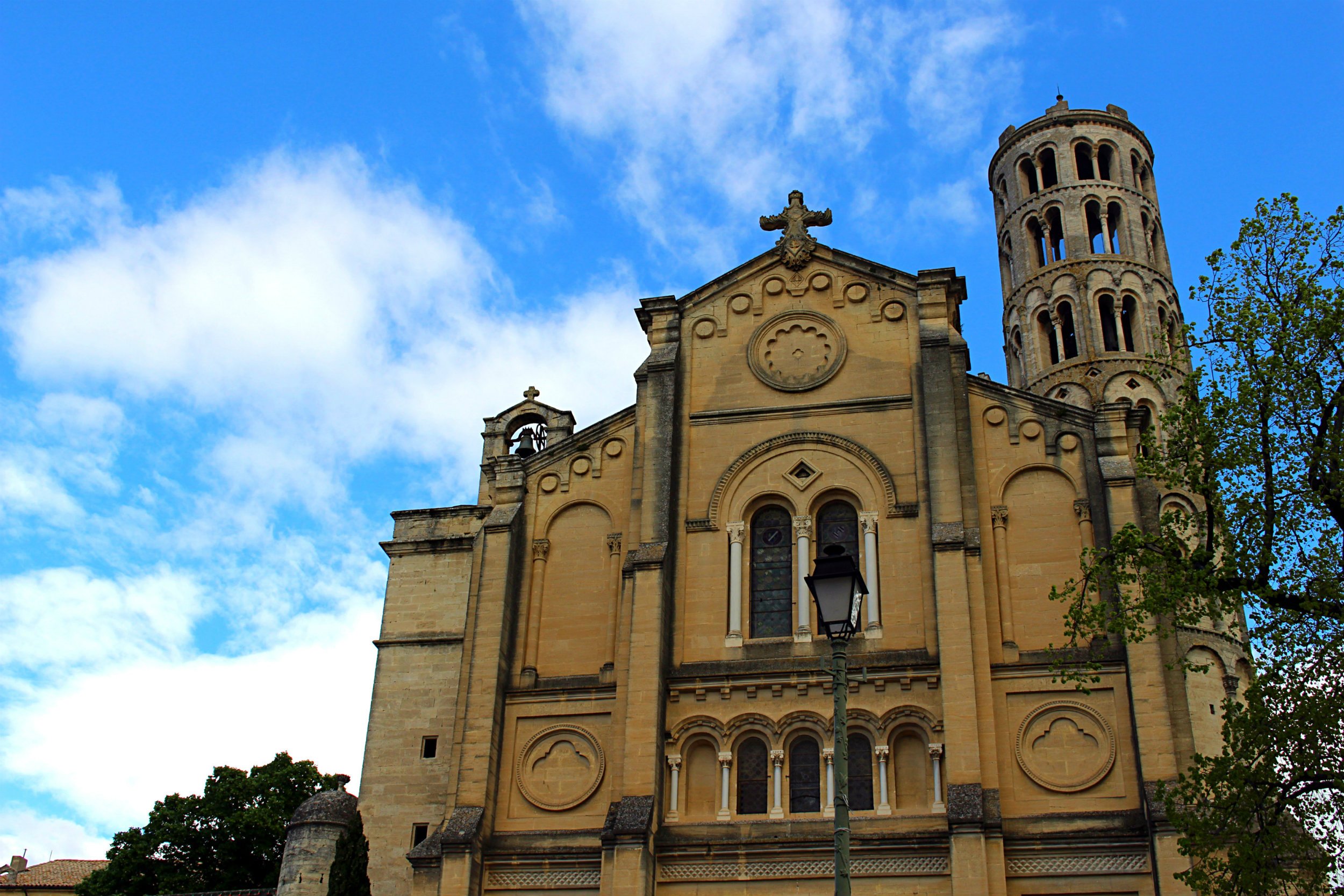



That night at Le Vieux Castillon, a hotel swaddled in the center of a secluded tiny Renaissance village of Castillon de Gard and a 15 minute drive south of Uzès, I took out my map and spread it across the bed. With a pen, I traced the road charting my return route and marked those little villages that I might pass on the way. From time to time, I would look outside and gaze at the moon that hung pale and gibbous. From the small terrace, I could see the terracotta roofs dominoed on a vertical hillside. Nearby were vineyards amidst olive trees that were forever bent and often uprooted or thrown into a fury by the north wind, as the French called it, ‘le mistral’. It is a landscape somewhere between tame and wild; much favored by romance novelist Barbara Cartland and artists like Bono or Mick Jagger who sojourned in the hotel.


As I drove back to Nice the next day, leaving the village and the town of Uzès behind, I made myself a promise to return. I passed couples sitting in a café, treading tractors on slow motion and trees that change with each season yellow in the fall, green in the summer and bare in the winter. Gazing at the ever-changing landscape blending in with the morning light, like impressionists’ brushworks all the while absorbing the regions true appeal – a languid pace. After all, it is still the South of France, only just across the river where you can look at the world with fresh eyes.



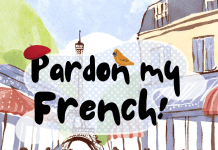
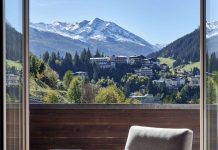
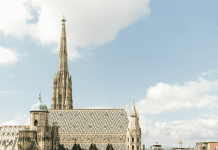
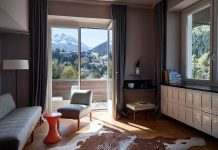


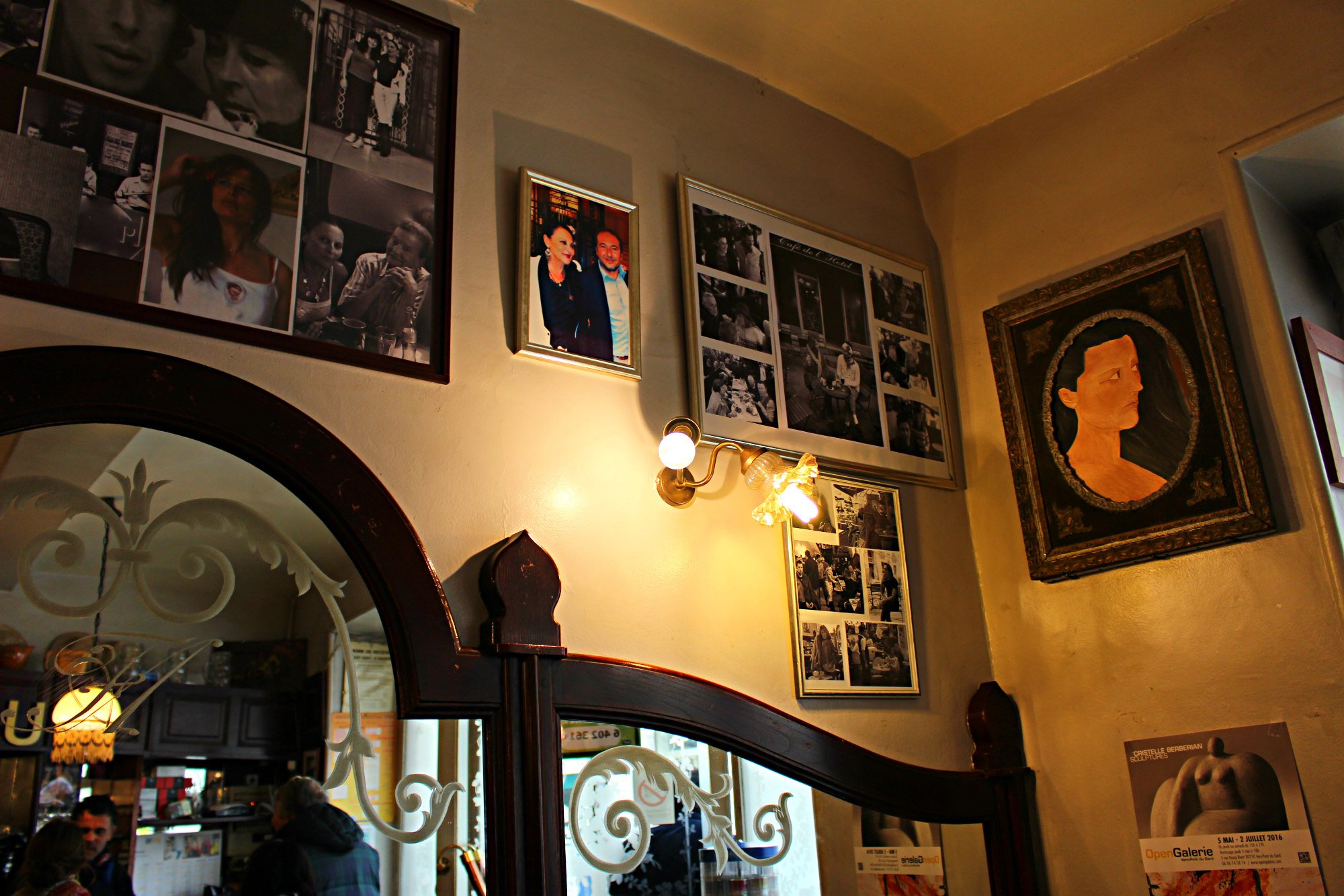

















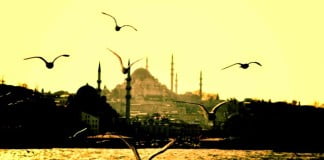
Never heard of Uzes but my interest grew the more I read about it. It does sound like a typical small town in the middle of nowhere that requires some efforts to get to, but then you get rewarded with tranquility and picture perfect settings. In parts it reminded me of Tuscany. The hotel you’ve stayed in with the pool oozes relaxation.
Carolin | Solo Travel Story
Really enjoyed your introduction to this very lovely part of France. Uzès looks like a delightful town to explore. It also seems to be surprisingly good for foodies – a Michelin restaurant (I feel we would almost certainly succumb to all those cheeses!) as well as the Place aux Herbes with incredible vegetables? Count us in! We also love architecture so would most definitely detour to Castillon-du-Gard to see the remarkable aqueduct.
Mitch & Colin from Very Tasty World
You captured the sultry yet romantic aspects of this part of the world, with a great introduction to what the area and town feels like.
It is steeped in history too, both internationally and nationally.
You brought Uzes to life and I was also surprised at a Michelin starred restaurant in such a far flung area of France
I’ve always been intrigued by the south of France, and you’ve really piqued my interest here. I’ve only heard of a few towns, so thanks for putting Uzes on the map for me with your beautiful writing. It definitely seems like there is more to this area than expected.
The only place in the south of France I’ve ventured to yet is Nice but it looks like I’ll need to at Uzes too, especially since it’s close enough to Nice, but with a very different look to it. The smells of lavender are what might guide me. Well, that or all those cheeses. I’d happily make a dent in Uzes cheese supply.
You have added yet another destination to my list! Uzés seems absolutely charming and just the kind of place I enjoy exploring. I was surprised by the inclusion of a Michelin restaurant in such a small community but the residents of France do know good food, so I probably should have expected it! I do love visiting and revisiting southern France and you’ve given me something new to look forward to on my next visit.
Lyn | http://www.ramblynjazz.com
We have never been to Uzès… yet! It seems like the perfect balance for a town of South of France – thank you for sharing. I would love to have lunch at la table d’Uzès, whenever it will be possible again!
What an amazing story teller. I loved your blog and it grabbed me with your opening paragraph. The incredible pictures helped. THXS for posting
I LOVE this part of the world and can’t wait until I can spend a lot more time here. This seems like such a pretty village and the food looks banging! I’ll have all the cheese please….
Sounds like a beautiful little town to be in. I love the beautiful cobbled streets. Will mark Uze’s for any South of France trips ?
I feel the part about summer not arriving. I think our heating has never been still on this late in spring. I must admit I am one of those people who only think about the sunny southern France. Uzes does sound very charming though. And who would have expected a Michelin Star restaurant?
You really make this village come to life, Jan. I’ve just put Uzes on the bucket list. I used to pass through Montpellier, Nimes, and Avignon a dozen times, but had never heard of Uzes before now.